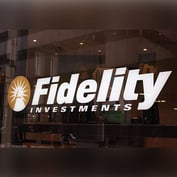What You Need to Know
- The days of 20 or 30 new SPACs each week may be behind us. And that isn’t necessarily a bad thing, experts say.
- Recently, the SEC decided to qualify warrants on the SPACs as a liability rather than equity on financial statements.
- Still, SPACs have become a viable alternative to IPOs and direct listings, the other ways companies can go public.
The SPAC market has gone from a high-powered firehose to the slow dribble of a leaky sink in just one month. In April there have been 11 SPACS announced—in March there were 115.
There is no one singular reason, but attorneys who work in and around the mergers and acquisitions and capital markets world say it’s a combination of increased SEC scrutiny (and a qualification change of how warrants are classified on financial statements), market saturation and the general theory that this couldn’t go on forever.
The rise and fall of the SPAC has been rapid.
According to financial data company Refinitiv, there were more than 10 SPACs announced in a month four times between January 2019 and June 2020, with an average of just under eight SPACs per month during that 18-month span.
Between July 2020 and the end of March 2021, there were no fewer than 18 per month, and the average over that period was 58 per month.
‘A Virtual Halt’
The beginning of the new year saw an explosion in SPACs. The pace ramped up to an average of a little over 40 per month in the last few months of 2020. In 2021, the average in the first fiscal quarter was 103 SPACs per month.
Then, less than a dozen in April.
“The SPAC IPO market has ground to a virtual halt,” Tom Burton, member at Mintz, Levin, Cohn, Ferris, Glovsky and Popeo and chair of the firm’s energy and sustainability practice, said.
He pointed to several factors that facilitated this, related to both business and accounting, including private investment in public equity (or PIPE).
“The PIPE market has been used to validate the valuation that SPACs subscribe to their targets,” Burton said. “With the market pricing now, it has caused the PIPE market to pause and the PIPE investors to reevaluate the value of these transactions.”
From a market perspective, “we would expect to see a normalization as valuations will come down and then we will start again,” he added.
SEC Impact
Burton noted another cause for pause: the recent SEC decision to qualify warrants on the SPACs as a liability rather than equity on financial statements.
“The SEC hasn’t really given official guidance on this, and that is a case where the accounting firms will need to work with the SEC. That has caused a slowdown,” he said.
Christopher Anthony, partner in the M&A and private equity group at Debevoise & Plimpton, agreed.
“That has been a big part of shutting off the pipeline,” he said. “There are basically two accounting firms that do all of the SPAC accounting.”









 April 30, 2021 at 09:45 AM
April 30, 2021 at 09:45 AM










